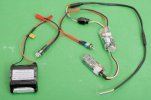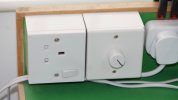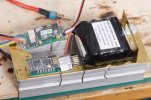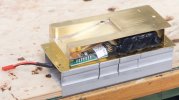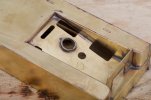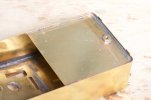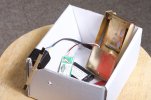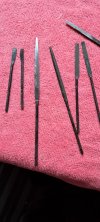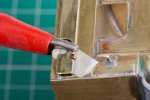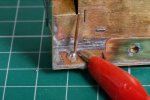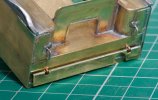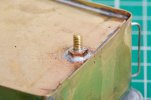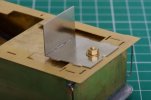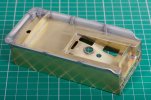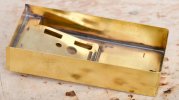
The incorrect alignment of the top of the body left me with a gap at the front of the tender, this is just visible at the top-left corner here.
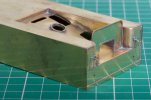
I thought of laminating on a complete new front but to be honest most of the problem will be hidden by a hinged flap to go on here. So I soldered on a strip of fret instead to hide the gap. Then the doors and handles for tool compartments.
I emphasise, there is nothing wrong with the kit. The body assembly would have gone together perfectly if I had built it on its base, as its designer intended it to be.
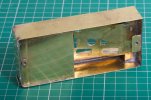
I made and added a bracket to hold the fixing nut for the front of the body. Again, the idea is the fixing screw will go through the chassis and then the floor and into the body.
This left me to add the copings. These are three whitemetal castings.
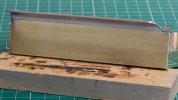
I had to begin by shaving the 1 mm flanges off the bottom of each casting, because I had set the tender top 1mm too high.
Attaching the first coping then took me most of an hour. I tacked it into place and removed it twice before I decided to accept it at the third attempt. This was my first go with the 100 degree solder – I did a few practice runs with gash castings but of course doing it for real is a lot harder. I still tinned the body with 145 degree solder, I don’t think this did any harm.
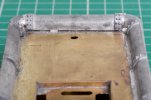
The second coping (on the right here) took nearer ten minutes, and then the third one slotted in at the end.
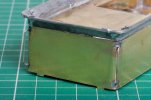
There is a gap here, but it's not as bad as it looks. I tweaked the short (end) casting a few times with fingers and pliers, and then accepted the job for what it is.
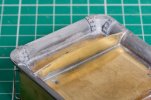
The result looked fine (to me!!) on the inside but the back looked skewed.
The vernier calipers confirmed, one end of the short casting (and its adjacent long casting) was about 0.5 mm higher than the other end. So I took out the round-nosed pliers and teased the high end downwards. The difference is now nearer 0.2 mm.
For some reason, 0.5 mm stuck out like a sore thumb but 0.2 mm doesn't notice, however long I stare at it. I guess other viewers will be about the same as me, or a bit more critical or a bit less. This error is across a width of 50 mm or so.
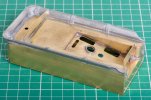
So the body of the tender is now pretty much done. I have ordered up a set of miniature "radial bristle abrasive brushes" to help with the clean up, thanks to
@Rob Pulham for the tip.
I have no idea how to unsolder castings fixed with 100 degree solder. I suppose the torch would do it, but I would have to ask for three new castings. I think they are there to stay.
So far I have completely overlooked how to arrange the hand rails which go from the front edges of the body onto the floor. This needs some thought



